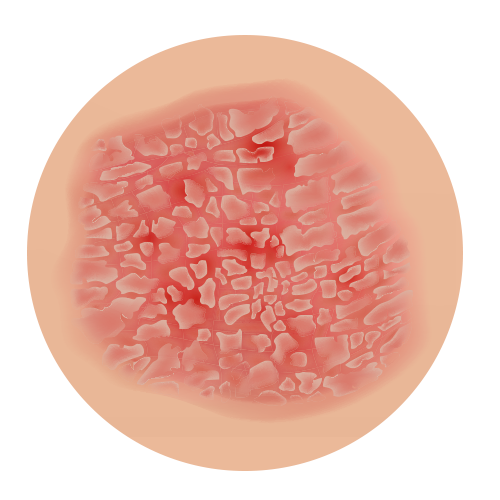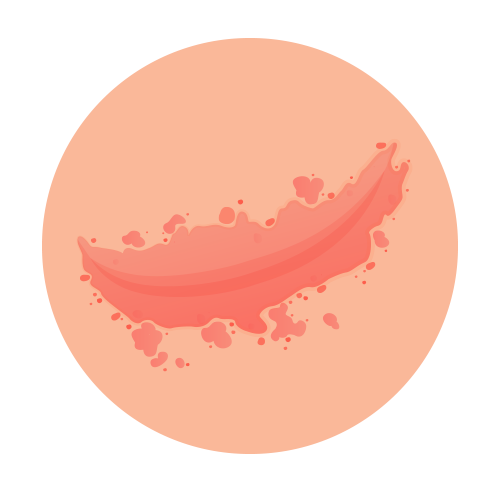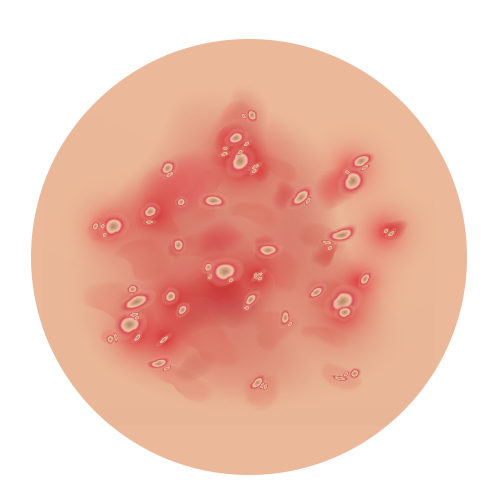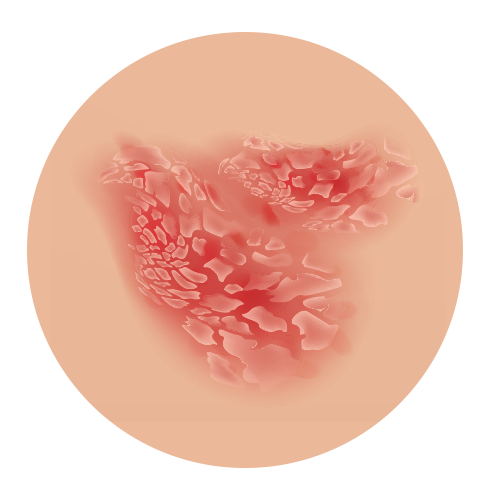Psoriasis
Psoriasis affects more than 8 million Americans, but what is it?
What is Psoriasis?
Psoriasis is a chronic (long-term), autoimmune skin disease that typically affects the knees, elbows, trunk, and scalp. This skin condition tends to lead to a rash with itchy, scaly spots.
What are the signs and symptoms of psoriasis?
Individuals with psoriasis frequently undergo cycles where it flares up for a few weeks or months before subsiding.
- Skin that itches and hurts and can break or bleed
- Minor bleeding sites where the affected skin has been scraped
- Rashes and/or red, inflammatory skin patches that are frequently covered with loose, silver- colored scales
- Swollen and/or stiff joints
- Your fingernails and toenails may have complications, such as discoloration and chipping; they could even start to fall out or separate from your nail bed.
- Your scalp may be covered in scaly plaques
What are the different types of psoriasis?
 |
Plaque psoriasisMost common type.
|
 |
Guttate psoriasisTriggered by a bacterial infection such as strep throat. |
 |
Inverse psoriasisCaused by fungi. |
 |
Pustular psoriasisA rare type. |
 |
Psoriatic erythrodermaThe least common type.
|
Plaque psoriasis
This is the most prevalent type of psoriasis, resulting in scale-covered, dry, elevated skin patches (plaques), that could be few or numerous. They typically show up on the scalp, lower back, elbows, and knees. Depending on your skin tone, the patches have different colors.
Guttate psoriasis
Young individuals and children are most commonly affected by this form of psoriasis. Usually, a bacterial infection, like strep throat, is what sets this type of psoriasis off. Small, drop-shaped scaling lesions on the torso, arms, or legs are its telltale sign.
Inverse psoriasis
Your groin, buttocks, and breast skin folds are mostly impacted by this form of psoriasis. It results in scaly, inflammatory skin patches that get worse with friction and perspiration. This form of psoriasis may be brought on by fungi.
Pustular psoriasis
This form of psoriasis results in distinct pus-filled blisters. On your palms or soles, it may appear in little patches or larger ones.
Psoriatic erythroderma
A rare skin ailment that results in a red rash covering the majority of your body. least common type of psoriasis, erythrodermic psoriasis can cover the entire body with a peeling rash that can itch or burn intensely. It can be short-lived (acute) or long-term (chronic).
What are potential triggers to look out for with psoriasis?
Prior to the condition being brought on by an environmental component, many individuals who are prone to psoriasis may go years without experiencing any symptoms.
- Climate, in particular, cold and dry
- Infections, including strep throat or HIV infection
- Skin damage such as a cut, bruises, scrape, bug bite, and/or severe sunburn
- Particular medications, such as lithium (used for mental health conditions such as bipolar disorder), hypertension medications (I.e. beta-blockers), and anti-malarial medications
- Excessive consumption of alcohol
- Smoking
What are the risk factors associated with psoriasis?
-
Genetics
Psoriasis is inherited in families. Your likelihood of developing psoriasis is increased if 1 of your parents has the condition. Additionally, your risk is further increased if both of your parents have psoriasis. -
Obesity
According to many studies, obesity-related inflammation eventually has the potential to trigger an onset of psoriasis symptoms. Inverse psoriasis, which forms in skin folds, is a common manifestation of obesity, including the armpits, under the breasts, between the buttocks, or in the creases of the groin or belly. -
Smoking
Smoking not only raises the likelihood of developing psoriasis, but it may also make the condition worse.